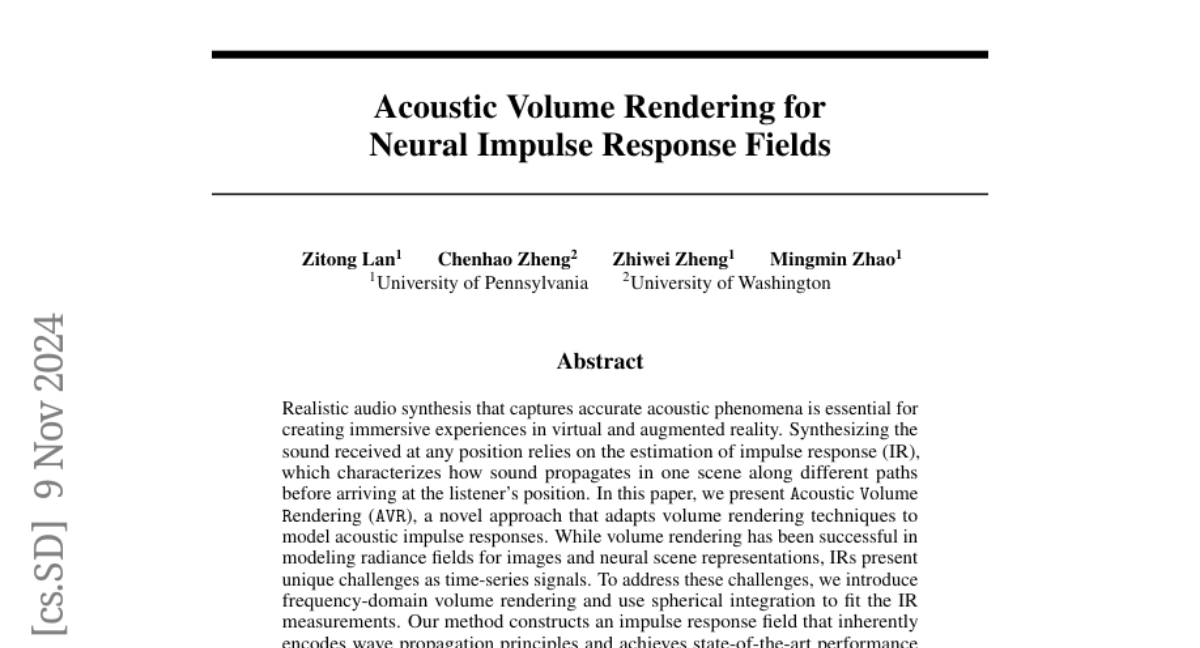Acoustic Volume Rendering for Neural Impulse Response Fields
Zitong Lan, Chenhao Zheng, Zhiwei Zheng, Mingmin Zhao
2024-11-13

Summary
This paper talks about Acoustic Volume Rendering (AVR), a new method for creating realistic audio experiences in virtual and augmented reality by accurately modeling how sound travels in different environments.
What's the problem?
The problem is that creating realistic audio in virtual environments is challenging because it requires understanding how sound behaves as it moves through space and interacts with different surfaces. Traditional methods struggle to capture the complexity of sound propagation, making it difficult to synthesize accurate audio for users.
What's the solution?
To solve this, the authors introduce AVR, which adapts techniques from volume rendering—used in computer graphics for images—to model acoustic impulse responses (IRs). They developed a new approach that uses frequency-domain volume rendering and spherical integration to create an impulse response field that accurately represents how sound waves travel. This allows them to synthesize high-quality audio for various listening positions and scenarios, outperforming existing methods significantly.
Why it matters?
This research is important because it enhances the realism of audio in virtual and augmented reality, leading to more immersive experiences. By improving how sound is synthesized, AVR can benefit applications in gaming, training simulations, and other interactive environments where realistic audio is crucial for user engagement.
Abstract
Realistic audio synthesis that captures accurate acoustic phenomena is essential for creating immersive experiences in virtual and augmented reality. Synthesizing the sound received at any position relies on the estimation of impulse response (IR), which characterizes how sound propagates in one scene along different paths before arriving at the listener's position. In this paper, we present Acoustic Volume Rendering (AVR), a novel approach that adapts volume rendering techniques to model acoustic impulse responses. While volume rendering has been successful in modeling radiance fields for images and neural scene representations, IRs present unique challenges as time-series signals. To address these challenges, we introduce frequency-domain volume rendering and use spherical integration to fit the IR measurements. Our method constructs an impulse response field that inherently encodes wave propagation principles and achieves state-of-the-art performance in synthesizing impulse responses for novel poses. Experiments show that AVR surpasses current leading methods by a substantial margin. Additionally, we develop an acoustic simulation platform, AcoustiX, which provides more accurate and realistic IR simulations than existing simulators. Code for AVR and AcoustiX are available at https://zitonglan.github.io/avr.